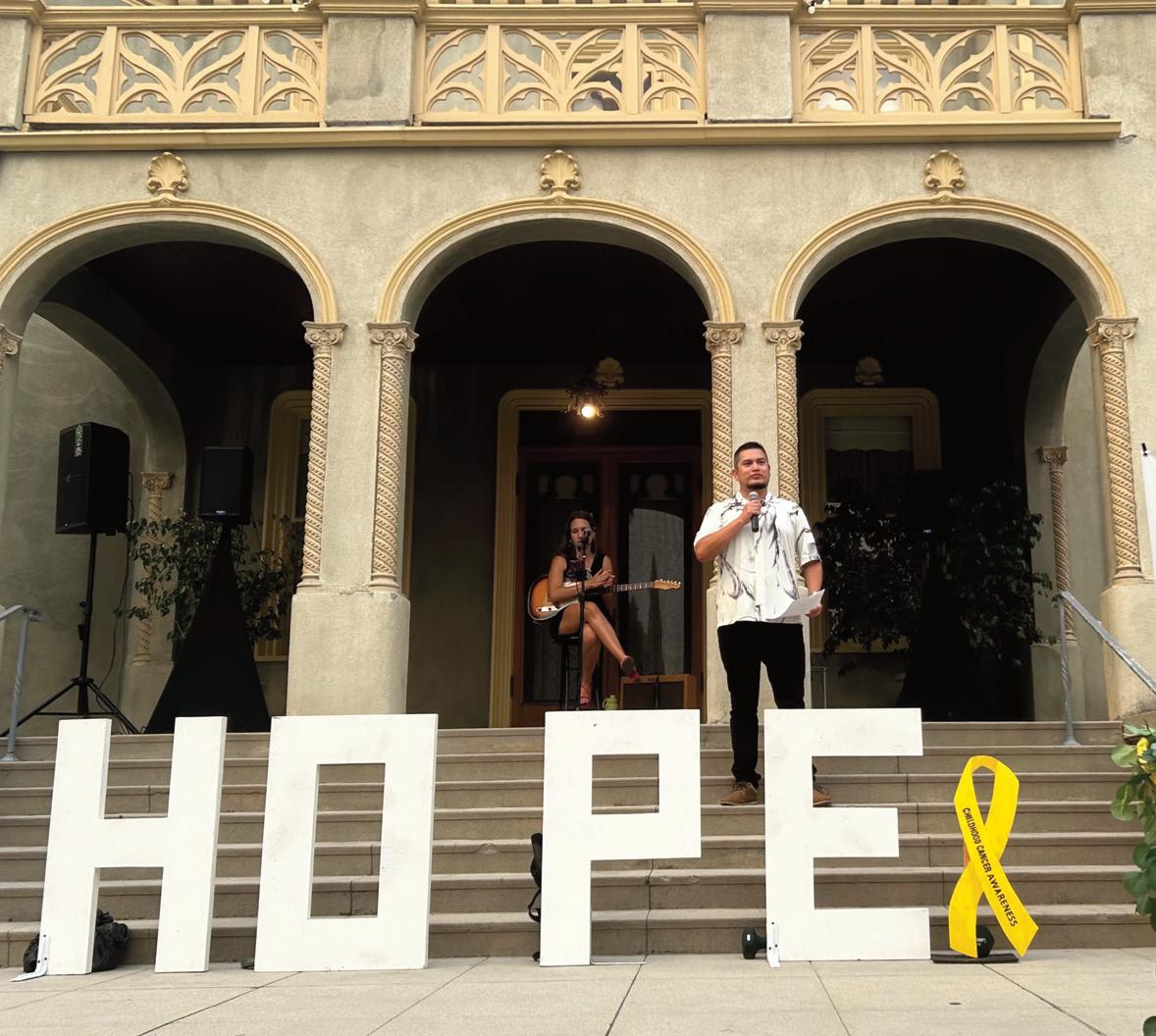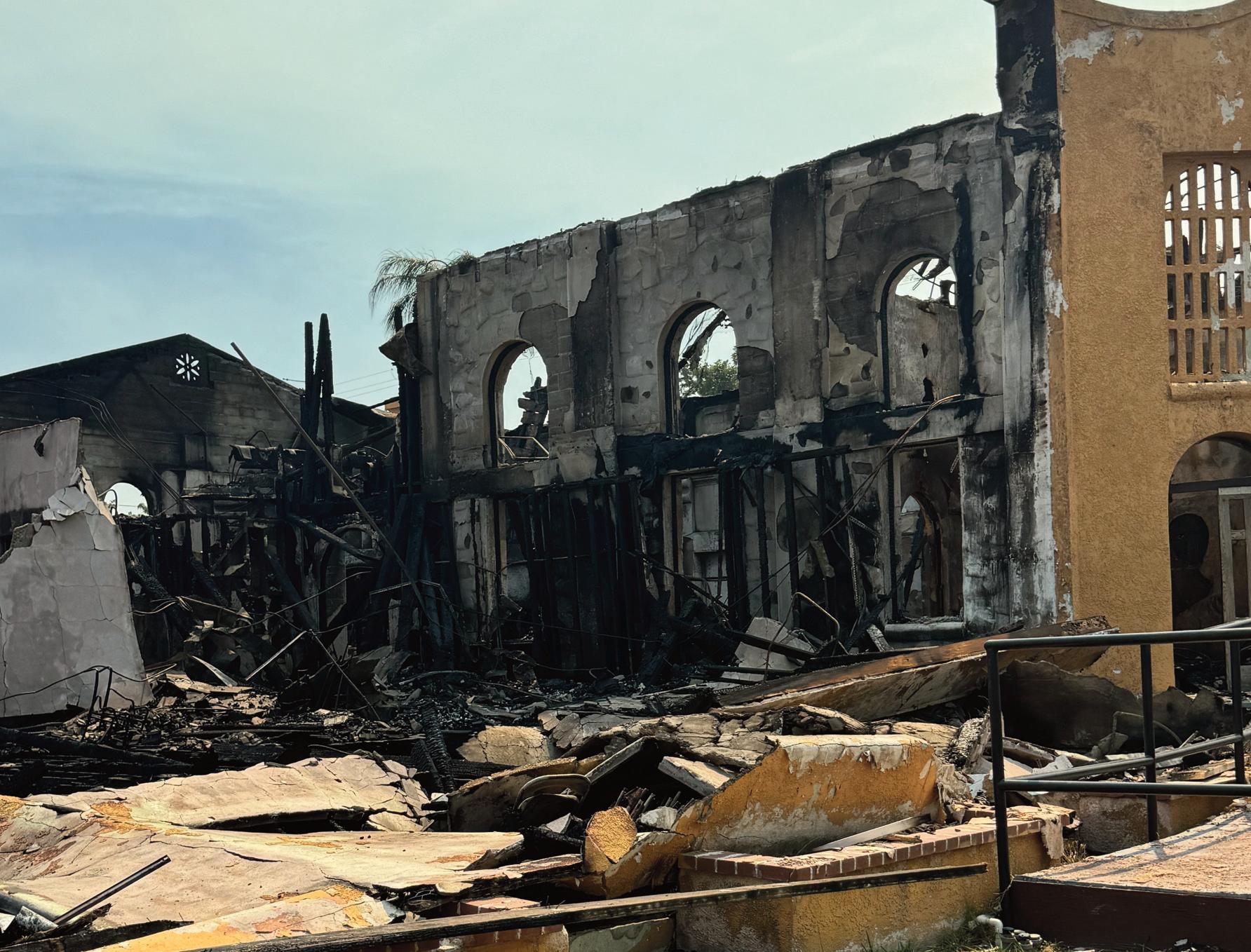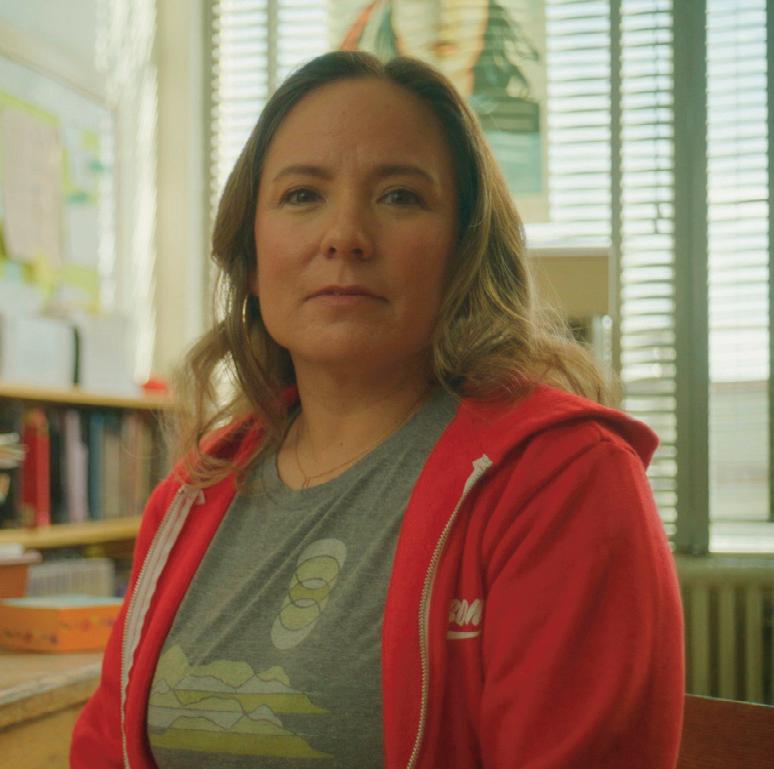COLTON COURIER WWe e ee




By Manny Sandoval
The City of Colton marked a significant milestone on September 9th with the groundbreaking of Greenlane’s flagship commercial electric vehicle (EV) charging station, a project set to transform logistics transportation and tackle the Inland Empire's long-standing air quality issues. The site will feature over 60 chargers for heavy-, medium-, and lightduty zero-emission vehicles (ZEVs), mak-
ing it the first of its kind in the nation. Supported by a $15 million grant from the South Coast Air Quality Management District (SCAQMD), this development is seen as a critical step toward reducing the environmental footprint of the logistics industry.
Colton Mayor Frank Navarro, speaking at the event, emphasized the importance of diversifying transportation energy sources. "One of the things I’ve always emphasized


By Manny Sandoval
The Line Fire, which broke out at 6:00 PM on Thursday, September 5th, near Baseline Road and Aplin Street in East Highlands Ranch, has now reached 23,714 acres, with moderate growth and only 5% containment as of Monday, September 9th
is that we need not only EV charging, but we need hydrogen fueling stations," Navarro said. "With hydrogen fueling stations, we not only add another option for manufacturers, but we also enable cargo to travel farther than with an EV alone. I don’t want to take away from EV, but we need hydrogen to back up EV logistics to further our reach."
The Inland Empire, a major logistics hub,

have been threatened, and mandatory evacuation orders are still in effect for several areas. The San Bernardino County Sheriff’s Department has urged residents to leave immediately due to the lifethreatening danger posed by the fire. The most recent evacuation orders and warnings are as follows:
EV Charging
has faced increasing air pollution, largely driven by heavy-duty truck traffic. Larry McCallon, South Coast AQMD Governing Board Member and Mayor Pro Tem of Highland, underscored the gravity of the issue. "The Inland Empire is all too familiar with the negative effects of air pollution, especially from the logistics industry. Heavy-duty trucks travel through some of the most vulnerable communities, like Colton, exacerbating the worst air quality in the country," McCallon said. "This project is a milestone in our world for clean air."
Greenlane’s charging site, which is expected to be fully operational by the end of 2024, represents a pivotal move toward cleaner freight transportation. The $15 million grant will expedite site design, engineering, and infrastructure development. Of the planned 60 chargers, 41 charging pedestals and 53 connectors are funded by the SCAQMD.
"This is going to transform the future of logistics transportation," Navarro continued. "The city of Colton is at the forefront, and we are ready to support this project moving forward."
Line Fire
Mandatory Evacuation Orders (Newest First):
Communities of Angelus Oaks, Seven Oaks, all campgrounds, and cabins in the area
The community of Forest Falls
Mountain Home Village
East of Orchard Road to Cloverhill, from Highland Avenue north to the foothills
Calle Del Rio to Hwy 38, including Greenspot Road North
All underdeveloped land east of Highway 330 to Summertrail Place, north of Highland Avenue
Running Springs and Arrow Bear Lake (east of Highway 330 and south of Highway 18)
Evacuation Warnings (Newest First):
Big Bear Valley from the dam to Cactus Road Green Valley Lake north of Highway 18
Cedar Glen, Lake Arrowhead, Crestline, Valley of Enchantment
Garnet Street to Bryant Street and Carter Street north to Mill Creek
Residents in areas under evacuation warnings are advised to prepare to leave quickly if the situation worsens. Those needing additional time to evacuate, as well as residents with pets or livestock, should leave now.
Evacuation Shelters have been set up at the following locations:
San Bernardino County Fairgrounds, Building 6, 14800 7th St, Victorville, CA
Jesse Turner Community Center, 15556 Summit Avenue, Fontana, CA
(Note: Residents previously sheltering at Emanuel Baptist Church were relocated to this new center.)
Animal sheltering is available at the Devore Animal Shelter, 19777 Shelter Way, Devore, CA.
Road Closures:
SR-330: Closed in both directions from Highland Avenue to Live Oak. Crews are active in the area, and no reopening estimate is available.
SR-18: Closed from Kuffle Canyon to Big Bear Dam in both directions. Evacuees may leave, but no inbound traffic is allowed.
SR-38: Closed in both directions from Bryant to Lake Williams due to fire spread. Evacuations are underway.
For real-time updates on road closures, visit the California Highway Information website.
Smoke Impacts and Air Quality
With increased fire activity, smoke remains a serious concern for surrounding areas. The People's Collective for Environmental Justice recommends residents take the following actions to reduce
For McCallon, the long-term benefits extend beyond logistics. "As a longtime resident of San Bernardino County and an advocate for mobility and clean air, I cannot express enough how important this project is for the air we breathe here in the Inland Empire," he concluded.
Greenlane’s CEO, Patrick Macdonald-King, shared the company's ambitious vision. "By establishing corridors and deploying a nationwide network of public charging stations, we're not only meeting the pressing demand for commercial vehicle infrastructure but also pioneering a transformative model for the future of EV charging and hydrogen refueling," Macdonald-King said.
This project, the first in a series of planned nationwide charging corridors, aims to reduce emissions from one of the most polluting sectors and alleviate the public health burden borne by Inland Empire residents.
As the region moves toward electrification, the collaboration between Greenlane, Colton, and the SCAQMD highlights the role of local innovation in addressing global environmental challenges.
smoke exposure:
Reduce exposure by keeping doors and windows closed.
Avoid burning indoors, including candles and wood.
Wear an appropriate mask, such as an N95 or P100 respirator, if going outside.
Check air quality regularly using airnow.gov or your local weather app.
Unified Command and Fire Response Efforts
The Line Fire is being managed under unified command by the CAL FIRE San Bernardino-InyoMono Unit, the City of Highland, the San Bernardino National Forest, the San Bernardino County Fire Protection District, and the San Bernardino Sheriff’s Department. While no structures have been destroyed, three firefighters have been injured since the fire’s inception. However, fire crews have worked relentlessly to slow the blaze, supported by 1,855 personnel who have been assigned to the incident.
Weather Conditions and Planned Firefighting Actions
Hot and dry weather will persist, with an Excessive Heat Warning still in effect. Temperatures in lower elevations are expected to reach between the low 90s and 100s. A slight chance of thunderstorms in the afternoon could complicate firefighting efforts.
Fire personnel are continuing direct and indirect line construction and protecting communities while maximizing the use of aircraft where smoke conditions allow. The fire is expected to remain active through the day, though changes in weather may help moderate its behavior overnight.
Governor’s Proclamation
On Saturday, September 7th, Governor Gavin Newsom proclaimed a state of emergency for San Bernardino County as the Line Fire surged past 7,000 acres. This proclamation activated federal resources, including a Fire Management Assistance Grant (FMAG) through FEMA, which will allow for 75% reimbursement of eligible fire suppression costs.
“I thank President Biden for his swift approval of support for the work of our firefighters and first responders battling this fire and protecting local communities,” said Governor Newsom in a statement. The proclamation also provides relief for impacted residents, including easing access to unemployment benefits and waiving fees for replacing vital documents like driver’s licenses and birth certificates.
For More Information
To stay informed on the Line Fire’s status, visit fire.ca.gov for real-time updates and resources. For information on how to prepare for emergencies, visit ready.ca.gov.
Rialto’s Arsenic Levels Near Legal Limit in Drinking Water: Council Challenges Veolia’s Water Safety Protocols
By Manny Sandoval
Arsenic levels in Rialto’s drinking water have raised concerns after City Well 2 registered arsenic concentrations of 9.7 parts per billion (ppb) in March 2023, just shy of the federal maximum contaminant level (MCL) of 10 ppb. During a contentious City Council meeting, Mayor Pro Tem Ed Scott questioned Veolia, the city’s water service provider, on their decision to keep the well operational and expressed doubts about the safety measures taken to protect the public.
“We should be looking at shutting that well down, period,” Scott asserted, after Veolia’s representative claimed that blending the water with other sources mitigated the high arsenic levels. “All that is, is dilution, and that is not acceptable.”
According to Stephen Difuccia from the Rialto Utilities Department, arsenic was detected in the city’s annual Consumer Confidence Report, which is mandated by the Safe Drinking Water Act. This report indicated an increase in arsenic concentrations from an average of 0.52 ppb in 2020 to 6.7 ppb in 2023, with a peak reading of 9.7 ppb when Well 2 was brought back online after three months of inactivity.
Veolia’s defense hinged on the argument that the arsenic levels, while elevated, remained within the legal limits. A Veolia spokesperson explained that the high arsenic reading was an “anomaly” due to the well being offline for an extended period and insufficient flushing before sampling. Subsequent tests showed levels stabilizing to around 5 ppb, well below the legal threshold.
Despite these assurances, Scott pressed the issue, asking Veolia what percentage of the city’s water comes from Well 2 and why alternative water sources weren’t prioritized. Veolia failed to provide immediate answers, which only further fueled skepticism.
“Why did we not shut the well down and pump from other areas?” Scott demanded. The Veolia representative reiterated that the well’s arsenic levels had not exceeded the
MCL and that shutting down Well 2 was unnecessary, sparking further debate over the safety of the city’s water supply.
Councilmember Rafael Trujillo added to the scrutiny by raising questions about lead contamination. Veolia assured the council that Rialto’s lead levels were “non-detect across the city” and highlighted ongoing efforts to inventory and replace lead pipes in the system, with more updates expected by October 16.
Veolia’s report, detailed in the 2023 Consumer Confidence Report and PowerPoint presentation, emphasized that arsenic is a naturally occurring semimetal found in soil, sediment, and groundwater. The company reassured residents that Well 2 water is blended with arsenicfree water from other sources, maintaining overall safety.
However, the report also acknowledged that the public health goal (PHG) for arsenic is as low as 0.004 ppb, far below the MCL of 10 ppb. While the PHG represents the safest level, achieving zero arsenic in drinking water is not always feasible due to the element’s natural occurrence.
Rialto’s partnership with Veolia dates back to 2012, when the city entered into a 30-year concession agreement with Rialto Water Services (RWS) to manage water and wastewater systems and undertake significant infrastructure improvements.
Veolia is responsible for delivering all water and wastewater services under this agreement.
The next quarterly arsenic sample is expected in September, with council members and residents closely watching to see if the levels remain stable or increase again.
For further information, Rialto residents can view the full Consumer Confidence Report on the city’s website or request a hard copy through their water bill.
California’s Inland Empire is a News Mirage. Grassroots Collaborations, Philanthropic Investment, and Smart Public Policy Could Help Change That.
By Dr. Thomas F. Corrigan, Inland Empire MediaWatch
The San Bernardino Sun is the paper of record for San Bernardino, California—a city of more than 220,000 in the state’s diverse and rapidly growing Inland Empire region (or “the IE”).
This Wednesday morning—August 28, 2024—the Sun published front-page articles about special counsel Jack Smith’s revised indictment of former president Trump, the rescue of an Israeli hostage in Gaza, vice presidential nominee J.D. Vance’s upcoming Southern California campaign stops, and Meta CEO Mark Zuckerberg’s claims that the Biden Administration pressured Facebook to censor some Covid19 content during the pandemic.
That same day, twenty minutes south of San Bernardino, Riverside’s Press-Enterprise published a front page that was identical to the Sun’s. The two papers’ headlines, bylines, articles, photos, and layout were all exactly the same. All that differed were the mastheads. Two other area dailies—the Ontario-based Inland Valley Daily Bulletin and Redlands Daily Facts—published the exact same front pages, too.
In fact, each day these four Inland Empire dailies publish entirely duplicative newspapers from cover-to-cover, including the same sections, articles, headlines, photos, advertisements, and even obituaries! So, when residents open their “local” daily (or its website), they must wade through coverage of other cities and towns across the massive two-county region—if their community is covered at all. Indeed, Wednesday's print edition of the San Bernardino Sun didn’t once mention San Bernardino or the surrounding cities of Rialto, Colton, Fontana, or Highland.
Why is this happening? Over the past two decades, U.S. newspapers have seen their advertising revenues evaporate, as Google and Facebook have cornered the digital advertising market. As a result, a third of U.S. newspapers have closed, and two-thirds of newspaper journalists’ jobs have been eliminated. So, local newspapers (and ad-supported outlets more generally) must do more with less, or they simply do less.
But in California’s Inland Empire, there’s an added problem: these duplicative dailies are all part of Southern California News Group (SCNG), which is owned by the “vulture” hedge fund Alden Global Capital. The nation’s third-largest newspaper owner, Alden is notorious for buying local papers, gutting editorial staffs, and siphoning off the remaining profits.
In 2018, SCNG executive editor Frank Pine said his newsrooms’ staffs had been halved in just two years under Alden. He called SCNG’s business model “broken” and even suggested their papers transition to non-profit status. That hasn’t happened. Instead, Alden passes off a single regional newspaper as four local
ones, and most IE residents are none the wiser.
A news desert? Or a news mirage?
In recent years, much of the academic and public dialog concerning the crisis in local journalism has focused on “news deserts”—areas with “no, or very limited, access to a reliable local news source—either print, digital or broadcast.” In her 2023 report, The State of Local News, Northwestern University’s Dr. Penny Abernathy identified 204 U.S. counties without any local news outlets and another 1,562 with just one.
In California's Inland Empire, the problem isn't so much a lack of news outlets, though. (Abernathy’s report identified 48 news providers across San Bernardino and Riverside counties, and Mapping Black California locates even more media outlets, generally). Rather, the problem is that many Inland Empire news outlets publish little, if any, substantive local journalism. And as Alden's duplicative dailies illustrate, this is not always apparent to news consumers.
I've argued that Calfifornia’s Inland Empire is a “news mirage”—an area that appears to have more substantive local journalism than it actually does. Other journalists and researchers have also used the “mirage” metaphor to describe troubling local news dynamics, including Chevron’s surreptitious ownership of a northern California daily, rural weeklies that employ few if any local reporters, and the rapid proliferation of AI-generated mis- and disinformation.
The Inland Empire news mirage is multifaceted, and it extends well beyond Alden’s duplicative dailies. As we’ll see, the IE has no dedicated, local TV news. Instead, L.A. stations pipe in our “local” newscasts, which portray the region as a crime scene. Under-resourced local weeklies and digital sites also rely heavily on “churnalism”—the passing along of press releases and other pre-packaged content as news. This enables powerful local actors like Amazon to manipulate public opinion. Meanwhile, popular social media accounts and “pink slime” websites engage in sensationalism and spread misand disinformation.
As a result, IE communities— which are majority-Latino and where 36% of families cannot meet basic needs—face a dearth of reliable information on pressing local issues, such as warehouse sprawl, housing unaffordability and homelessness, food insecurity, health and environmental injustice, and right-wing extremism. Moreover, law enforcement, public officials, and major corporations like Amazon operate without the sort of close journalistic scrutiny that local democracy requires.
There are reasons to be optimistic about IE journalism, though. A grassroots network of ethnic and community media is innovating with cooperative journalistic approaches to inform and empower local communities. The
region’s community foundation has launched a Journalism Innovation Hub+Fund to support those grassroots efforts, and that Hub has linked up with the Press Forward national philanthropic coalition. Finally, the California legislature recently considered two bills that would have had the tech giants pay to restore local journalism, though a recent deal with Google seems to have significantly dampened those efforts.
Whether grassroots collaborations, philanthropic initiatives, and (smart) public policy interventions are successful will determine, to no small degree, whether Inland Empire communities have the news and information needed to grow sustainably, equitably, and democratically. Otherwise, the region will continue to operate with a news ecosystem that, because of its lack of substantive local reporting, enables corruption, racial and economic inequality, and health and environmental degradation. But, first, we must recognize the region for what it is—a news mirage.
A multifaceted mirage Alden’s duplicative dailies are the most galling manifestation of the Inland Empire news mirage, but they are not the only contributor. Flip on a television in the IE, and you’ll find newscasts from the typical local TV affiliates— ABC, NBC, CBS, Fox, and Telemundo. However, except for the relatively tiny Palm Springs market, none of those stations are based in the Inland Empire. Instead, the region’s “local” newscasts are piped in from Los Angeles, and when they do cover the IE, it is almost exclusively violent crime stories.
At 4.7 million residents, the Inland Empire is the nation’s 12th largest metropolitan statistical area, it has the fifth largest Latino population, and the region is projected to grow twice as fast as the rest of Southern California over the next 25 years. Shouldn’t such a large, diverse, and rapidly growing region have its own, dedicated TV stations and newscasts?
Meanwhile, many local weeklies and digital news sites rely heavily on “churnalism”—the passing along of police reports, press releases, and other prepackaged content as news. Churnalism is cost-effective, and it may well satisfy some readers’ wants. Crime gets lots of clicks, while press releases touting area businesses and non-profits provide a steady, compensatory stream of “good news” (something residents have said they desperately need).
However, churnalism also skews news coverage toward relatively low-value stories, and it cedes editorial influence to the very institutions journalists should hold accountable, including corporations, law enforcement, and public officials. As Orwell famously said, “Journalism is printing something that someone else does not want printed; everything else is public relations.”
This has real consequences for Inland Empire communities. A December 2023 document leak revealed that Amazon—the IE’s largest private employer—was (and presumably still is) engaged in a “corporate manipulation” campaign aimed at stifling community opposition to its warehouse sprawl, labor practices, and health and environmental impacts in the region. The campaign includes such tactics as “strategic donations, currying favor with local politicians, [and] methods of cultivating allies and placing of ‘Amazonians’ within community groups and local boards like sleeper spies.”
Amazon’s PR team can’t execute this corporate manipulation campaign on its own, though. It needs local media to pass along its friend-of-the-community press releases as news, and many IE outlets—time- and resourcestrapped as they are—have enabled that campaign.
Recent newspaper ownership changes threaten to make matters worse. This summer, Arizonabased Times Media Group (TMG) acquired four locally owned IE weeklies and promptly laid off three of those papers’ editors, including the 30-year editor of the Fontana Herald News. TMG has also curtailed community freelance contributions. Apparently the $35 per article freelance rate was cost prohibitive.
Now, the editor at the Yucaipa/Calimesa News Mirror works double-duty at the Redlands Community News, the Fontana Herald News and Banning/Beaumont Record Gazette are produced by TMG's Arizonabased staff, and the company is closing three of its four local offices. Meanwhile, these papers all use the slogan, “Your Community, Your Newspaper.” Just don't try to find them at the office.
Sensationalism, misinformation, and “pink slime”
Like nature, information abhors a vacuum, and some of the sources that have emerged to fill the Inland Empire’s local news void practice journalism that is questionable at best.
On social media, a slew of newsy accounts like Inland Wire, Inland Empire Pages, What’s Up With Riverside and onthetira (aka Foo News Network) have amassed followings in the hundreds of thousands. These accounts produce mostly sponsored content for local businesses. However, they also plug area events, share community-sourced videos, and some even publish on-the-ground reporting. Unfortunately, much of their local news coverage is sensational crime reports and vehicle accidents that, while eye-popping, does little to inform civic or democratic life. They also rely heavily on churnalism, and some even repackage other area news sources’ reporting without attribution.
Some of these popular accounts have also published blatant misinformation. For instance, on June 24, 2024, Inland Empire Pages shared with its (then) 237,000 Instagram followers an
unattributed, grammatically-challenged Facebook post. It read:
Sex trafficking ring busted in the old FALLAS building [in Highland, California]. 60 women and children taken in a box truck. They were then taking by Ice. The men arrested driving the truck had ms13 tattoos.
Over the post, in large bold letters, Inland Empire Pages asked a rhetorical question: “Why isn’t this all over the news?” The answer was quite simple: the sex trafficking story wasn’t true. There had been a cartel-related bust in Highland, but, as the San Bernardino Police Department confirmed, “there were no trafficked women or children involved.”
Several commenters (including myself) raised alarms about this misinformation. However, Inland Empire Pages did not remove the post or offer a proper correction, and over the following days the post went on to rack up more than 700,000 views, 12,000 likes, and 30,000 shares. Since then, Inland Empire Pages has added an additional twenty thousand followers.
Other Inland Empire “news sources” are designed to deceive. The company Metric Media operates 75 “local news” websites across California that purport to “fill the void in community news” by “provid[ing] objective, data-driven information without political bias.” In the Inland Empire, Metric Media’s sites include Coachella Today, Pomona Valley Today, NW and SW Riverside News, Victor Valley Times, and East and West SBV Times in the San Bernardino Valley.
These outlets look and sound like legitimate local news sources, but they are what journalism analysts refer to as “pink slime” websites. Playing on the public’s trust in and demand for local news, these operations churn out a mix of low-value, AIgenerated stories, byline free press releases, and a slew of right-wing propaganda.
For instance, on July 24, 2024, East SBV Times published a misleading story stating that local Democratic Congressman Pete Aguilar (CA-33) had voted “to make it easier for illegal aliens to vote in federal elections.” In fact, non-citizen voting is a ginned up problem, and bills like the one in question—the SAVE Act—would make it harder for citizens to vote, particularly young people and people of color.
But the East SBV Times report about Aguilar wasn’t a one-off story; it was part of a national propaganda campaign. For, on that same day, Metric Media ran the exact same story about Pomona Congresswoman Norma Torres and scores of other Democratic Representatives across the country. Metric Media simply swapped out the names and photos to fit their 1000+ local outlets.
Read the full article at IECN.com.
*Originally published in the MediaWatch newsletter.

